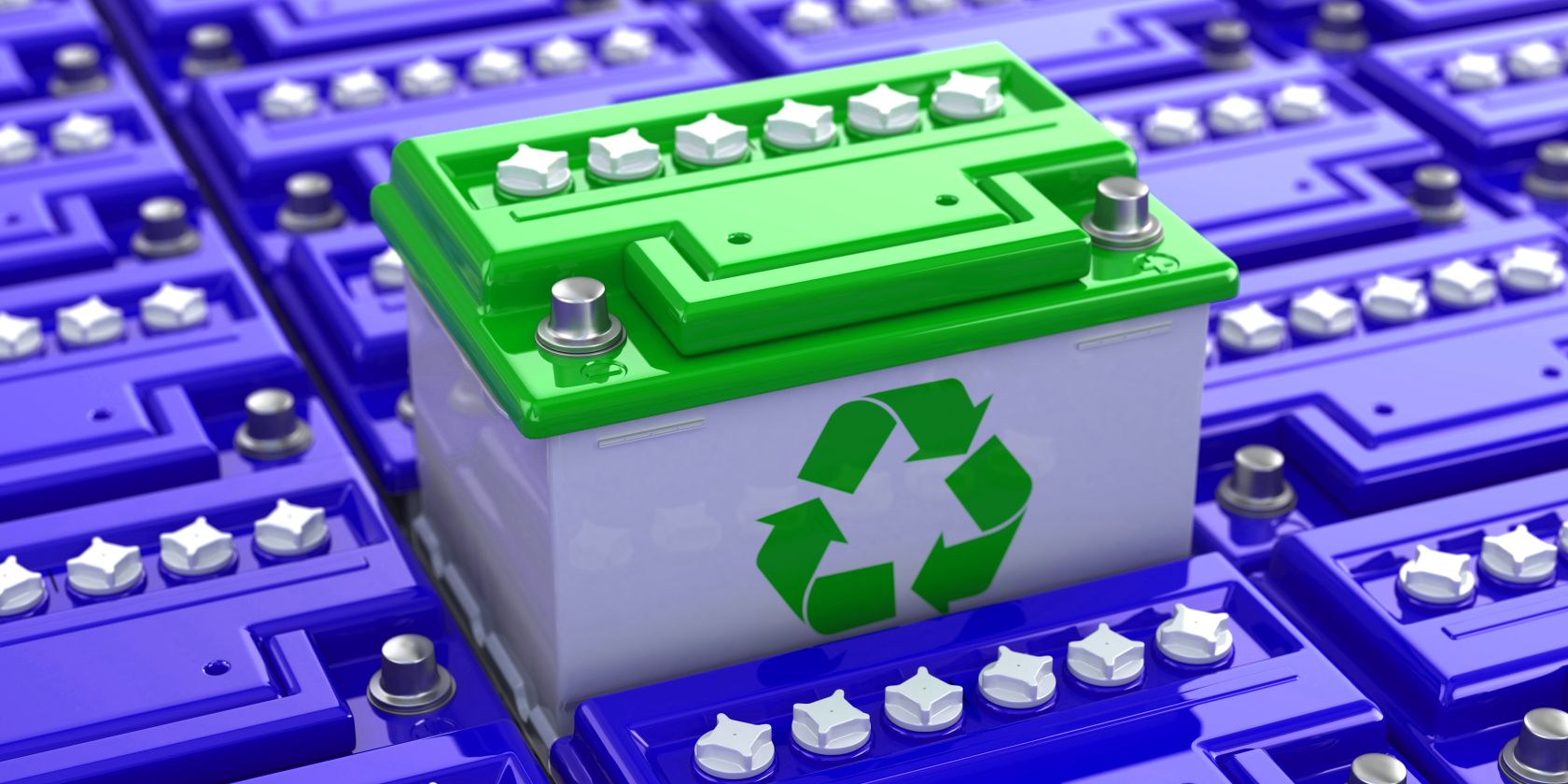EVs are taking over the global car market, and there's no apparent end to the spike in electric vehicle sales. While it's great that so many EVs are being sold and that emissions levels will likely drop, recycling EV batteries is still a concern.
The amount of batteries that will begin to phase out of their useful life expectancy will increase massively in the coming years, and finding useful (and safe!) ways to use their remains is vital. Read on to find out how battery recycling works and what's in store for the future.
Why EV Battery Recycling Is a Big Deal
At the moment, the recycling process for lithium-ion batteries isn't exactly a super profitable business venture, and it's also complicated to extract all the elements and metals that originally composed the EV battery. But, even if you've made sure to keep your EV's battery healthy, the problem of EV battery recycling needs tackling sooner than later. EVs are starting to launch into uncharted territories, where pretty soon they'll overtake internal combustion engine vehicles as the most sold cars.
This is all great, but the unforeseen danger is the sheer amount of EV batteries that will be hanging around when older EVs start reaching the end of their useful life. Imagine landfills filled to the brim with EV batteries, as well as batteries from smartphones and other electronic devices. This is a recipe for disaster. Not only this, but mining the materials that go into EV batteries is taking a huge environmental toll, and we're just getting started.
At some point, there has to be some thought going into the fact that EVs might produce zero tailpipe emissions, but if sourcing the battery materials is causing irreparable environmental (and humanitarian) harm to the country mining it, is this really sustainable? The solution is to reintroduce as many recycled materials as possible into the EV supply chain. This will ensure that the production of EV batteries will eventually start taking a turn toward sustainability and also helps alleviate the toll placed on the environment by heavy mining.
If most of the materials going into EV batteries were recycled, we could rest easy that they won't run out.
This is obviously easier said than done, but there are already steps taken to help alleviate this huge problem. For example, battery repurposing is being used to give old EV batteries a second life. These batteries will be used for non-intensive tasks such as powering streetlights, like this initiative by Nissan that used old Leaf EV batteries and solar panels to power the Japanese town of Namie's streetlights. Repurposing is great, but recycling is the hurdle that must be overcome.
Even though much work is left to be done in the EV recycling sector, at the moment, the most common forms of EV battery recycling include hydrometallurgy-related techniques and pyrometallurgy. Unfortunately, these techniques aren't perfect, and recovering materials from the old batteries is difficult and, in some cases, produces tons of greenhouse gas emissions.
Recycling EV Batteries Through Hydrometallurgy
Some EV battery recycling companies manually disassemble the batteries they recycle to separate the metals and plastics that make up the casing of the batteries from the innards of the battery where the valuable materials are located. Although this is more labor-intensive, it is a very effective way of separating the materials.
Companies also discharge batteries before beginning work on them to handle them safely. The cool thing is that the electricity recovered from the discharging process can be reused to power the recycling processes in the factory. Basically, the goal is to make sure nothing goes to waste. Later on, the batteries are shredded using safe methods that limit the risk of fires.
Once the battery is shredded, the resulting mixture is separated into different groups, one of them being what is known as a "black mass." The black mass is the crown jewel of the operation because it contains the prized materials that every company is working hard to recover effectively. What does the black mass contain? You can find lithium and super valuable cobalt within the black mass, among other key elements.
Once what remains of the battery is the black mass, it is chemically treated using a wet process (this is where the hydrometallurgy part comes in) to retrieve the individual elements and materials that will hopefully be reintroduced into the supply chain. The hope with these recycling processes is to keep lithium-ion batteries (and their materials) in the supply chain and extend their service life by either reusing them or injecting their recycled materials into the manufacturing of new batteries. In this way, dependence on foreign mining is greatly reduced.
Recycling EV Batteries Using Pyrometallurgy
Pyrometallurgy is another method that can be used to extract some important components from old EV batteries. The problem with this method is that the environmental impact is substantial because it uses super high temperatures to retrieve whatever compounds it can recover.
Now, if you're going through all the trouble of extracting these elements from a battery's remains, and the process also has a huge environmental toll, you'd ideally want the process to be extremely efficient. But this isn't always the case with smelting. A lot of the time, many of the important materials aren't actually recovered when using pyrometallurgy. Lithium is one of these super important elements that isn't recovered when batteries are recycled through the use of pyrometallurgy.
Battery Recycling For Cleaner EVs
Even if EV battery recycling is still in its infancy, it's super important to keep an eye on this sector's growth. If the world is going to fully transition to electric cars, it's beyond important to have safe methods for recycling the huge amount of materials used in this industry. It's also super important to eliminate as much harmful mining from the equation as humanly possible. A clean and sustainable supply chain for the production of EV batteries is a necessity for a future propelled by electric cars.

